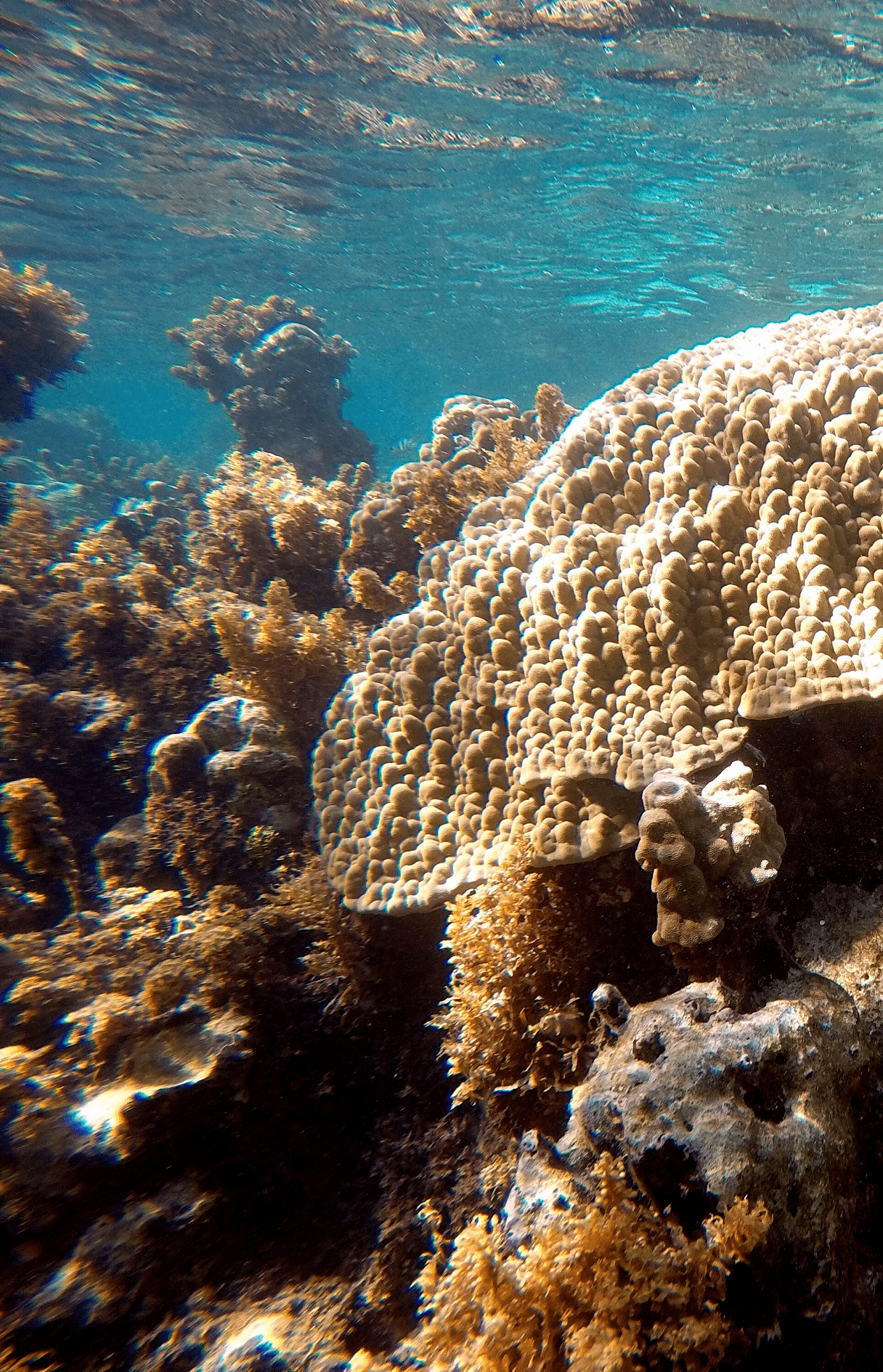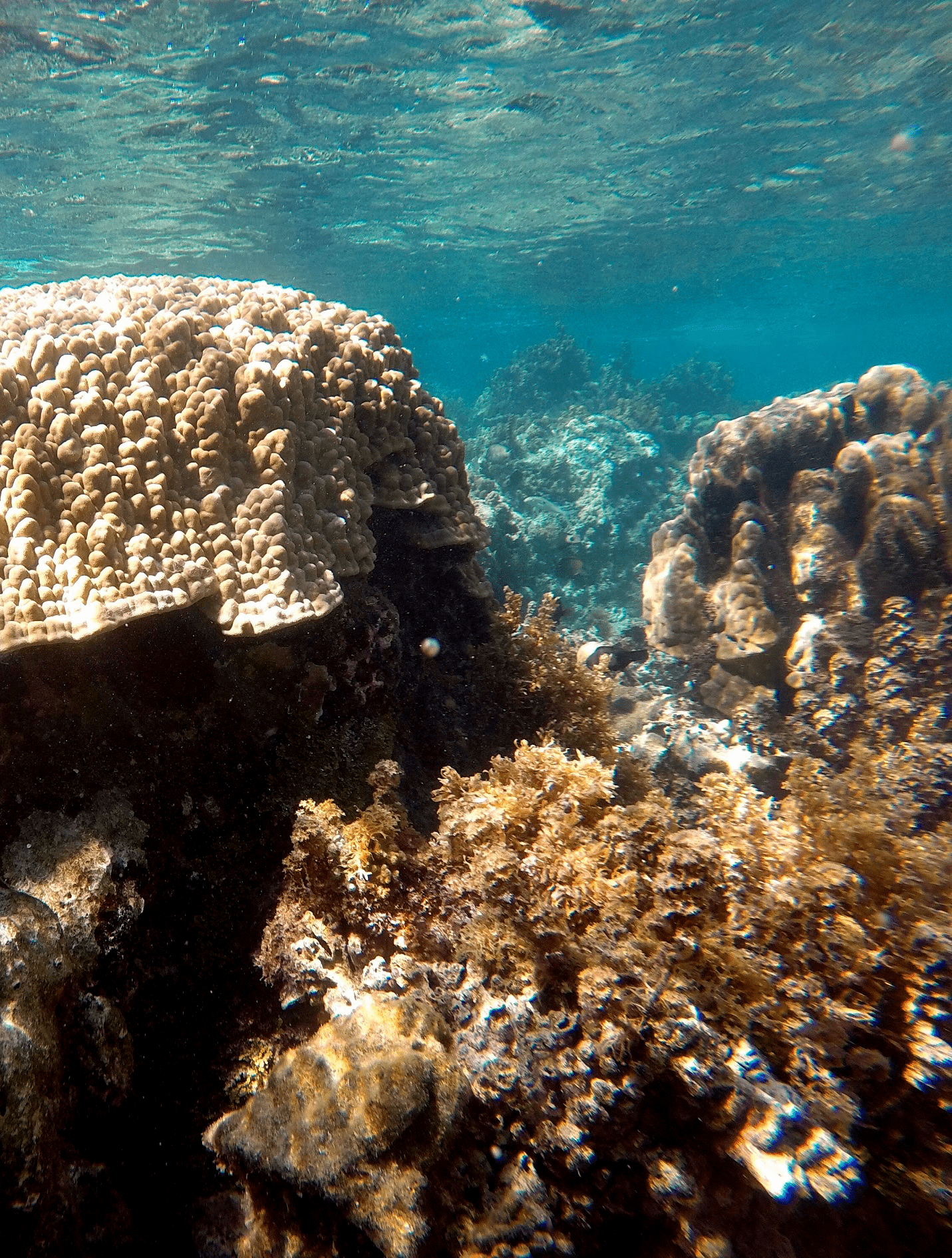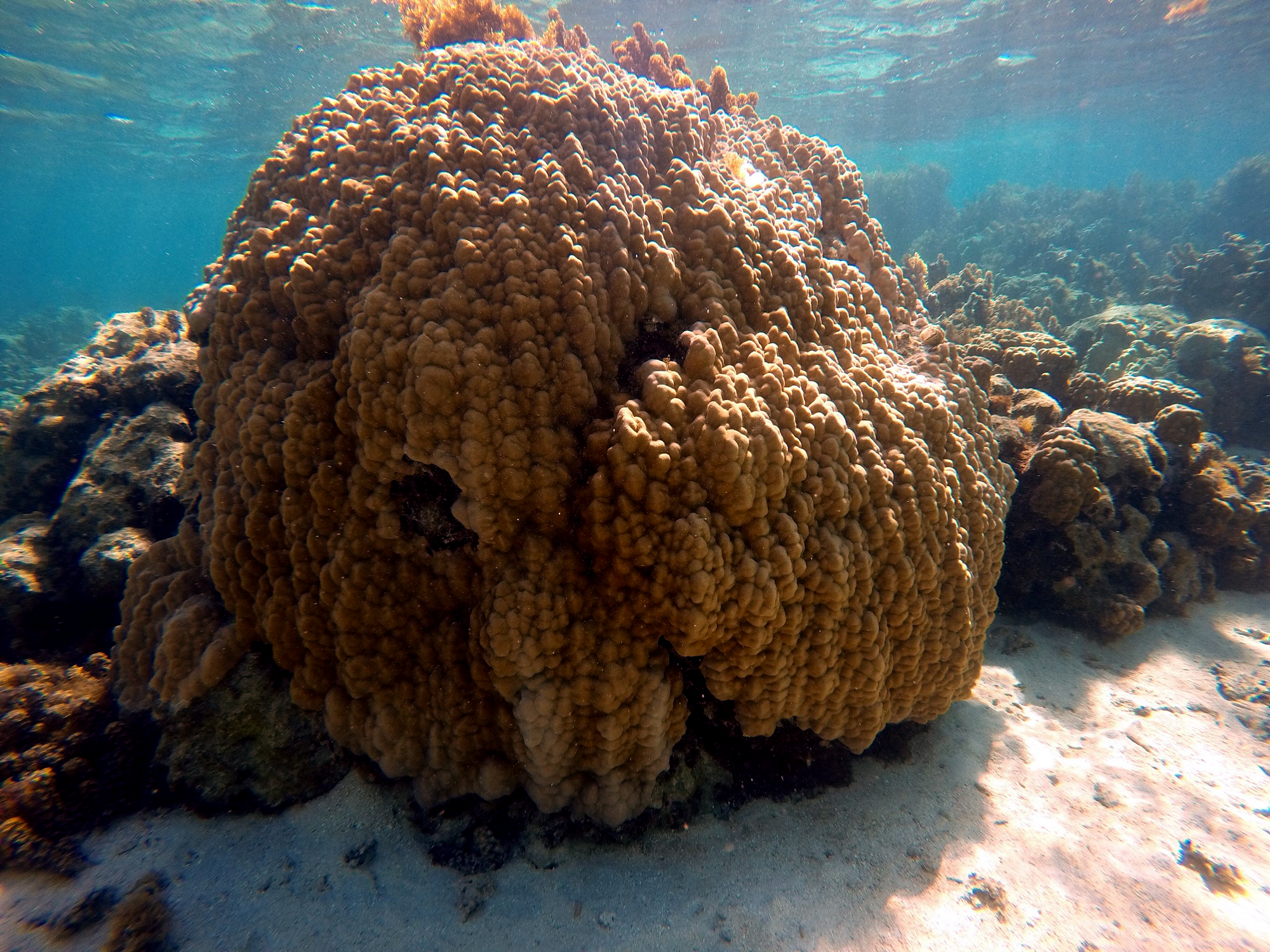Porites is a genus of stony coral; they are small polyp stony (SPS) corals. They are characterised by a finger-like morphology. Members of this genus have widely spaced calices, a well-developed wall reticulum and are bilaterally symmetrical.
Porites are often called massive Porites, as they form large mounding boulder shaped colonies. These corals are among the most environmentally resistant species on the reef.
Porites corals are primarily broadcasting spawners and transmit their symbionts within their eggs. Porites are dominated by a single type of algal symbiont with high fidelity and productivity.
They have been shown to be accurate and precise recorders of past marine surface conditions. Measurements of the oxygen isotopic composition of the aragonitic skeleton of coral specimens indicate the sea-surface temperature conditions and the oxygen isotopic composition of the seawater at the time of growth.
Threats to corals in the genus Porites include predation, climate change, and anthropogenic pollution. Additionally, the symbiotic zooxanthellae reduced their photosynthesis rate when exposed to both stressors.
Done and Potts (1992) observed that when settled, larvae in Porites are vulnerable to competition from other corals and predation from sea urchins. Additionally, mortality likelihood increases following strong storms.
Exploring Porites
Coming Soon
Corals in the genus Porites are found in reefs throughout the world. E5 Coral focuses on Porites native to French Polynesia.







